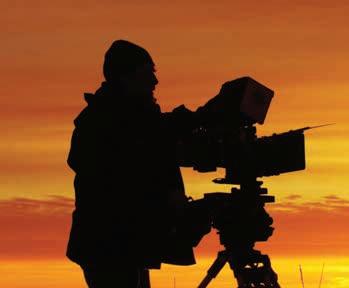
31 minute read
On Set
Credit: Edith Cole
DP Christopher Ball csc on the set of Still the Water in PEI, filming lobster “setting day” at 5 a.m.
Cinematographer Christian Bielz (associate member) on the set of Love at Look Lodge.
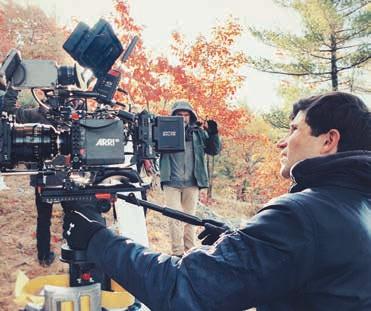
Credit: Sise Drummond

Associate member Dennis Grishnin on the set of a Top Shop spot.
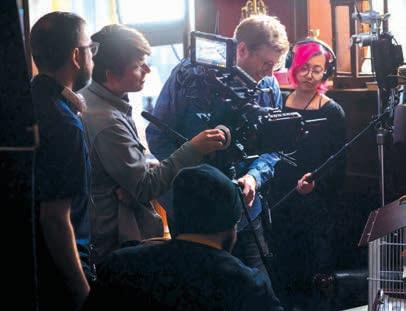
Director Olivia D’Oliveira and DP John Ker (associate member) shooting music video “Waist Down” by Adeline, produced by OPC.

Director Patrick White, first AC Ian Carleton, cinematographer Scott McIntyre (associate member) and sound recordist Julie Zhu on the set of feature film Queen of Spades.
The Cooke Look ®
The Original Since 1894
Photo: Fredi Devas
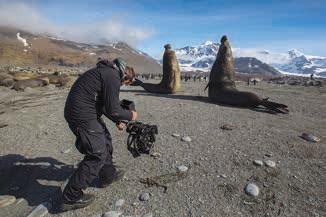

MINI S4I T2.8 Primes
“I’ve used Cooke lenses before and always loved them. I filmed elephant seals fighting for the Antarctica episode. I wanted to try and make the sequences feel and look different to others I’d seen shot, but they are a challenge to film — huge behemoths up to 18ft long and 8000lbs. Thousands of them turn up in mating season and the males prepare to fight for their right to breed. The miniS4/i’s were great as the size and weight of them allowed me to use them hand-held on a M¯oVI Pro gimbal to get among them, capture the feel of the combat and creatively control the visual scene. But it’s no easy job moving around these monsters. I was frequently having to jump out of the way as one animal charged another, while others charge past you to escape. It’s one of the most amazing places I’ve ever been. Outside of the flora and fauna, it’s the huge amounts of time we have to invest and of course the extreme demands we place on the kit, due to the environments we subject them to. I am happy to say that the miniS4/i’s performed flawlessly in every situation.”
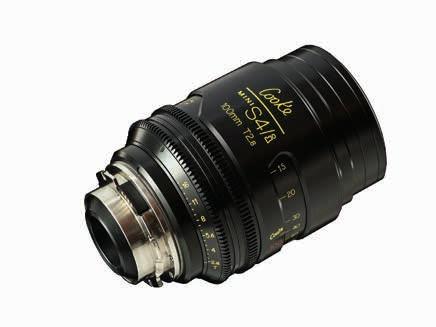
Mark MacEwen Director of Photography BBC Seven Worlds, One Planet
British Optical Innovation and Quality Since 1894.
cookeoptics.com T: +44 (0)116 264 0700 Cooke Americas cookeamericas.com T: +1-973-335-4460
Credit: Elly Dassas
Samy Inayeh (centre) with grip, George Laramee (left) and assistant director, Derek Filiatrault (right). Main Photo: Serinda Swan as Jen Cooper examining a corpse.
By Fanen Chiahemen
In the CBC series Coroner, Jenny Cooper (Serinda Swan) is a recently widowed Toronto coroner who investigates unexplained deaths, using not only her expertise but also her intuition to solve crimes. Also starring are Roger Cross as Detective Donovan McAvoy, who works alongside Cooper; Ehren Kassam as Cooper’s bereaved teenage son Ross; and Éric Bruneau as Cooper’s love interest Liam. The first season of the one-hour drama premiered in January 2019 as the highest-rated new drama series on CBC in more than four years, garnering up to one million viewers by the end of the season. Inspired by M.R. Hall’s series of books and created for television by Morwyn Brebner (Saving Hope, Rookie Blue), Coroner is produced by Back Alley Films, Muse Entertainment and Cineflix Studios, with Adrienne Mitchell (Durham County, Bellevue) serving as lead director and executive producer. Samy Inayeh csc, who shot both Seasons One and Two, takes Canadian Cinematographer behind the scenes of the show.
Canadian Cinematographer: How would you describe the look of Coroner?
Samy Inayeh csc: One of the things that we looked at with Adrienne Mitchell was we knew we were making a show that is one part crime procedural and another part a very layered family drama. So I think trying to find the balance of we’re not making a cop show or a crime show, and we’re not making a drama, but we’re trying to make something where those two worlds kind of flow together seamlessly. And we decided we wanted to go much more for a cinematic approach to our television world, so we tried to shoot the show as if it was a feature film and not rely on quick cutting and the camera constantly moving. We tried to use wider lenses most of the time as much as possible, shoot closer to the actors and try to keep a very specific point of view in terms of how we light and cover the scenes. The approach seemed to be that if we were smart and made the right choices, we could make a show that has a cinematic look and still execute it on a really tight timeline.
CC: How do the show’s different locations affect your approach?
SI: One of things that surprised me in Season One that didn’t get much easier, and in fact got much more difficult in Season Two, is that it’s a very ambitious show. We spent most of our time on the road shooting on location, which is very demanding on the budget and the crew. We had to move around to a lot of different locations, spend most of our days on the road, do a unit move or two in a day. We shot in Ajax, Brampton, Parkdale, Queen Street West and East. We really moved around the city
Above: (L-R) Therapist Dr. Neil Sharma, played by Saad Siddiqui, with Dr. Jenny Cooper, played by Serinda Swan. Right: Serinda Swan as Dr. Jenny Cooper in episode 2 of Coroner season 2.
of Toronto between the two seasons and we really captured a lot of Toronto, but it was a challenge. Much of what we were doing, for the sake of speed, was taking light away just to create contrast and shape. Our style was stylized naturalism, which is where we really just enhanced what the location was providing us in terms of practical lighting and windows, and making choices in terms of how we blocked the scenes, taking the most advantage of the locations we were shooting in. But also, because we weren’t able to pre-rig and put lights everywhere, we really just enhanced, borrowed or built on top of what was already there in terms of the practical lighting, and we used LEDs to light the space and supplement what was already happening in

those locations. Very much what we did was rely heavily on the grip department to put up blacks and block light and take light away so that we could create shape and contrast and mood to the imagery. This quick and adaptive approach, which was often very improvisational, was made possible due to my incredible lighting and grip teams led by gaffer Chris Harmsworth and key grip Chris Toudy. Having done a few shows together now, including Season One, they are in tune with my approach and always ready with the tools we rely on to sculpt our look and do it very efficiently.
CC: How do you factor in what is happening dramatically into the lighting?
SI: For me, lighting on this show should always try and reflect the interiors of the characters; it is something we really strive to do. We shoot in a lot of real locations and even though we are building off of the environment, we still always try to bring it back to the character or the heart of the scene. I feel like we got bolder this season as well by trying not to follow too many rules in the lighting. So in a lot of our spaces that we return to from episode to episode, like Jenny’s house, the Coroner’s office interiors, we just changed it all the time – hard light coming through the windows sometimes, sometimes just soft ambience, which lights were on or off, didn’t matter what we did last time, we just went with what felt right for where we were in the story, the time of day, the context of that episode, but always where the characters were emotionally. I’m really proud of this approach, and the more I shoot the more I don’t worry about a lot of the things I used to worry about and focus more on what is going to draw the viewer into the story and the characters.
CC: Jenny also has a country house in rural Ontario where she stays sometimes. Can you talk about shooting night scenes there?
SI: There is really nothing around that house; it’s just fields and trees as far as you can see, with almost no artificial light anywhere to build on, so every time we had to do night exterior work there, we’d have to basically build the lighting from scratch. Oftentimes we would just light the actors with a big soft source, and then we would spend the rest of the time lighting the backgrounds for depth. We try not to rely on backlight as much as possible on this show. We were often working on the edge here, trying to keep as much as possible a “true” night look that felt quite dark despite the fact that we had to light it all up so the audience could still see the environment. We would sometimes be able to light from the house but never if it didn’t feel realistic, and occasionally we had car headlights or an LED lantern, but the rest of the time we had to build it. We did rely on something we called the lobster light, because it resembled a lobster trap. It’s essentially a bunch of curved pipes to make a cylindrical cage that we then hung a bunch of SkyPanel S60cs in and then covered in magic cloth and hard fixed to a lift. We’d usually have this close to our set, to give us a nice ambience. All the lamps are controlled wirelessly from my gaffer’s iPad on the ground so we could dial in just the right amount of fill or ambience by dimming and not affecting the colour temperature. This was a huge asset when we were doing this kind of work.
CC: What influenced your choice of camera and lens package?
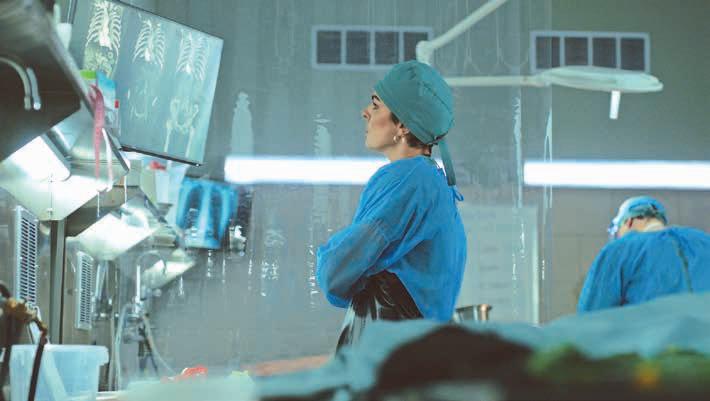
SI: I chose to use an ALEXA Mini. Most of the time, we put it on a dolly with a Ronin 2 and a set of Alpha Wheels, and we could operate the camera wirelessly. It saved us a lot of time in the studio. We could pair the camera on the Ronin and dolly with either an Isolator head or a Black arm and just move the camera very freely without laying track or dance floor and save a lot of setup time. We have one of the best dolly grips I’ve ever worked with, Johnny Wersta, and he loves to move the camera, so we could find shots with movement and not have to worry about adding time to our days. Our A cam Steadicam operator Keith Murphy and Johnny had a real shorthand, so using headsets we could improvise during the shot and find things really easily. It was a lot of fun to work this way. In terms of lenses, we used Master Primes. I really liked the Master Primes because it was nice to start with a perfect image that I could break down if I wanted to, and I found that I approached things in a much more intuitive way when it comes to filtration. We also carried a set of Sigma Cinema primes, which I quite love and mix really well with the Master Primes. They are an affordable option to have in the package and we really loved the size and weight. We would often just go with these for more vigorous handheld work. Also, for quick rigs, shooting in cars, we could get the camera in some more tight spaces when we stripped it down with one of these lenses. It’s also really nice to have a second set of primes if you need to splinter a camera for a quick second unit moment. Another application was Jenny having an anxious moment searching her house in a panic for missing meds that she may have inadvertently poisoned her father with. We used a Walter Klassen Far-Out rig with a mini on Serinda Swan. Physically, this kind of shot can be very difficult since the actor is wearing the camera. Putting on a Sigma 20 mm for this
Inayeh (left) with lead director/executive director, Adrienne Mitchel (middle right) and crew on location in Pickering, Ontario, for Coroner, Season Two.
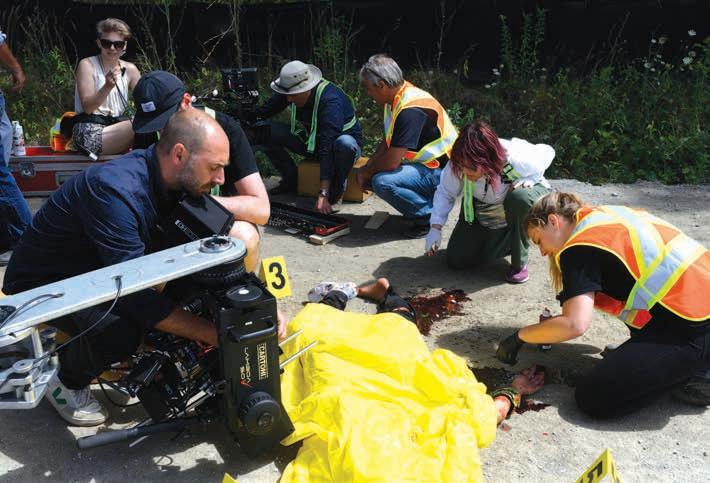
work gave Serinda a bit less weight and allowed her to do some impressive stuff for this shot. We’ve used these lenses like this for two seasons now and it really helps us out a lot. Adrienne Mitchell really likes to experiment, so when shooting some of the more intimate moments between Jen and the bodies she has to examine we often use ARRI tilt and shifts to take us into a new sort of narrative space. But for dream sequences, flashbacks, and more intense scenes over the last two seasons, due in part to Adrienne’s love for experimentation and what she would call a more “impolite” and more “imperfect” approach, we have thrown a bunch of unique lensing into the show from tilt and shifts, lensbabys, Probe lenses, anamorphic lenses and Petzval lenses. This excitement for visual experimentation is another reason why this show is so much fun to shoot.
CC: How does the fact that Jenny uses her intuition a lot to solve crimes play into your work as a cinematographer?
SI: It definitely does. I think that’s why we get away with the show having a bolder look and having a bit more attitude visually. The show is very much from Jen Cooper’s point of view; it’s very subjective storytelling. We always see what Jenny sees; we’re never on the outside of Jenny’s perspective. A lot of the time, the camera’s very close to her or we’re behind her, following her, seeing what she sees and experiencing what she experiences. We really try to not expose the audience to information visually before she sees it; it keeps the show interesting and adds a layer of mystery and sophistication to the storytelling that we really like. Adrienne really likes a journey; she likes to move with her characters and uncover things with them. She cares about her characters and wants the audience to feel what they feel and wants the visuals to reflect their feelings as well. So this idea of journey is that the camera is with them, which allows us to create longer shots and not have to shoot a lot of coverage. We design some really fun shots that are tough to execute and light, but it’s always worth it and I think brings our show closer to an approach more commonly seen in feature films.
Season Two of Coroner began airing from January 6 on Mondays at 9 p.m. and is also available on CBC Gem.
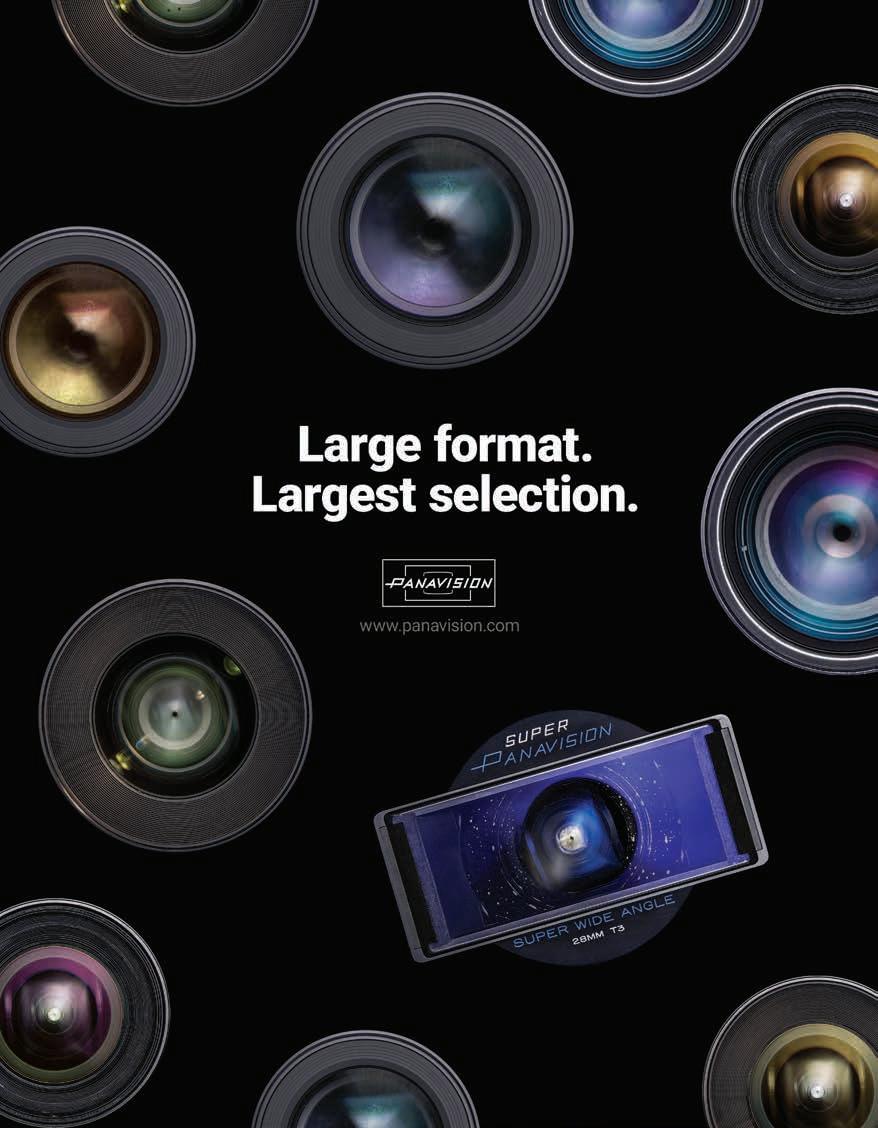
Letterkenny
Small-Town Life Goes
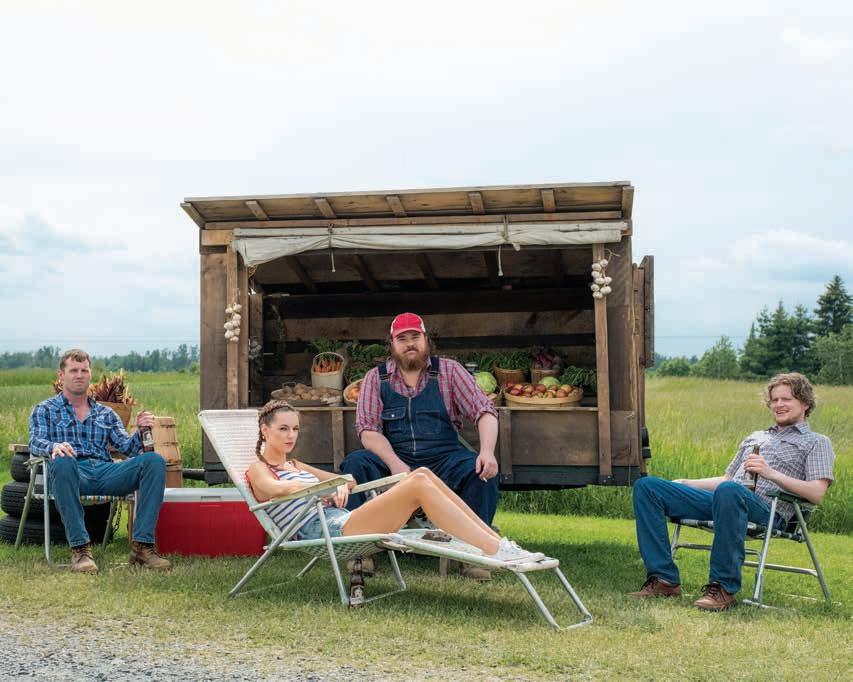
Letterkenny

with Jim Westenbrink csc
By Fanen Chiahemen
Photos: Amanda Matlovich
Produced by New Metric Media, the popular, award-winning sitcom Letterkenny – created by Jared Keeso and directed by Jacob Tierney – centres around two friends, Wayne (Keeso) and Daryl (Nathan Dales), living in the fictional small town of Letterkenny, Ontario (loosely based on Keeso’s real-life hometown of Listowel). The comedy series examines small-town life through the lens of the various characters who inhabit Letterkenny and frequently clash with each other, including the farmers (also known as the “hicks”), the local drug users (the “skids”), the out-of-towners, the hockey players (the “jocks”), and the natives who live on the reservation on the outskirts of town. The show first debuted in 2013 as a YouTube series called Letterkenny Problems before it was commissioned as a series by Bell Media in March 2015 with New Metric Media and began streaming on Crave in February 2016. At the 2019 Canadian Screen Awards, Letterkenny won Best Writing, Directing, Lead Actor and Casting, with DP Jim Westenbrink csc winning for Best Photography in a Comedy Program or Series. The seventh season of Letterkenny kicked off in October 2019 with another seven new episodes streaming from Christmas 2019. The show’s popularity is also picking up steam in the United States, with the subscription service Hulu announcing last May that it had acquired exclusive U.S. rights to Letterkenny and all future seasons, and the platform premiered the seventh season of the series as a Hulu Original in October. Meanwhile, the New Yorker magazine recently described the series as “exquisitely weird” but “shockingly good-hearted.” Westenbrink, who has shot the series since its move from the web to TV, explains that the show’s surreal trademark was created quite organically and collaboratively from the start. “Nobody really had any idea what they were looking for; we kind of just collaborated all of us together with our own visions,” the DP says. “Everybody brought something different. I think Jared Keeso brings the creativity and the writing and the growing up in the small town of Listowel. I grew up in a small town, in Orangeville, and I can understand the same kind of characters that are in that town. So everyone brought their own visions of these characters and how they would turn out, and we just ran with it. It was quite a collaboration. After the first season, we knew we had something good.” Keeping things simple and streamlined appears to be the key to the show’s continued success, Westenbrink indicates. The series is shot in Sudbury, and the crew typically block shoots
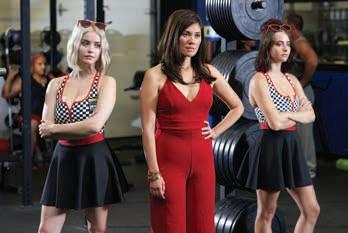

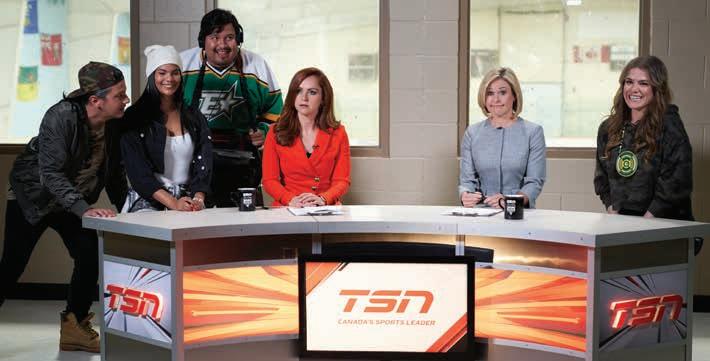
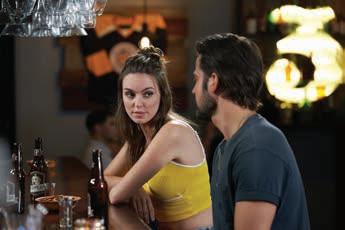
(L-R) Julia Burch, Vanessa Matsui and Lauren Burch.
Michelle Mylett and Tyler Hynes. Brooke Bruce, Jonathan Torrens and Sarah Wayne Callies. Dylan Cook, Jade Willoughby, Braldey Trudea, Kate Beirness, Tessa Bonhomme and Tiio Horn.
Jared Keeso, Jared Abrahmson and Nathan Dales.
seven half-hour episodes in 20 days. “Our average workday is 8 till 6,” he says. “We move along quick. Some days we’ve actually shot 24 pages. And we don’t do 100 takes. As soon as we have something we like, we move on. So we do one to three takes and move on.” The production shoots most interior scenes during the winter block, when it tends to get dark in Sudbury as early as 4 p.m., while the summer block is usually reserved for shooting exterior scenes. The northern location helps create the show’s scenic backdrop, Westenbrink says. “Shooting in Sudbury is almost like shooting on the moon sometimes because there are picturesque clouds that form in the sky and are unbelievable, so that’s kind of why they shoot there,” he says. But shooting in Sudbury does come with its challenges because of the distance to most facilities. “It’s not like you can just go next door and get another lens or another camera body or whatever,” the DP observes. “Keslow’s been really good with us. All our lighting and grip packages comes from Whites, and it’s a combo package, so it’s a mixture of HMIs and tungsten lighting. It goes everywhere with us and we keep it tight.” Still he tries to make use of the natural light, relying on backlighting as much as he can. “We schedule different times of day to shoot different scenes if it’s going to look better,” he reveals.

“We fight the weather many times with the rain because we don’t really have any rain cover so to speak. And the only set that we have is the interior of the farmhouse kitchen set and the hockey boys’ locker bathroom. Everything else is kind of on location. So if it’s snowing and it’s cold and it’s raining, we’re out there. “We’ve been in that situation where it’s been pouring rain or snowing, and we’ve said, ‘Okay, well, this is ridiculous, we can’t have this scene outside,’ and we just change it to something else,” he continues. “And the good thing about having Jacob and Jared there is they’re the writers and creators of the show, so we can just creatively make a decision.”



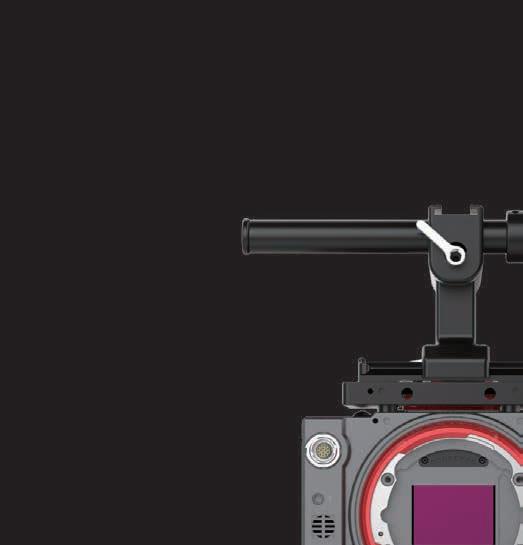
Jim Westenbrink csc winning a CSA Award for Letterkenny.

When shooting inside, such as in bars or arenas, Westenbrink’s main strategy is to simply enhance the existing practicals. “Like if it’s tungsten, we’ll use tungsten or mixed lighting or whatever. I try not to over-complicate things so we can get more shots,” he explains. “Sometimes we have had 90-plus two-camera setups a day.” Having shot the series on the Sony F55 since the first season, Westenbrink will be making the switch to the Sony VENICE. “I just thought it was time to switch from a 20-year-old camera. And we’re probably going to end up shooting 4K RAW. I think it’ll just give us better image quality,” he says. He operated the camera on Season One, and then as the show became more popular – and more lucrative – they were able to bring in another operator, although Westenbrink still operates scenes shot on the ice. “We have ice rigs for the hockey stuff. I’m not a bad skater, so I’m one of the guys who skates around with one of those dollies on ice, which is kind of fun,” he says. For lenses, his staples are a full set of Master Primes and two long zooms. “And we have lots of NDs and ND grads because we want to take down the sky and stuff when we’re outside to try and get the detail in the clouds,” he explains. Letterkenny’s signature symmetrical framing is Tierney’s aesthetic, Westenbrink reveals. “Jacob likes to have symmetry,” he says. “So all our shots are kind of based on that, all our wide shots, our establishing shots are all very symmetrical.” Fight scenes are a staple on the show, with Wayne frequently compelled to prove himself as “the toughest guy in Letterkenny.” The fight scenes are shot at 60 frames with two handheld cameras, Westenbrink says. “It’s a lot of fun, and those fights are rehearsed ahead of time so we’re not waiting and doing lots of setups,” he explains. “The challenge is some of these fights always happen at night, so you need a little more light to compensate for the 60 frames. Or you need faster lenses, and that’s when we use the Master Primes.” After 35 years in the business, Westenbrink reveals there are not too many curveballs thrown at him on Letterkenny. “For me it’s all about lighting. We never get so out of control that it’s going to be too much,” he says, noting that his camera operator Bill Buttery and first AC Tony Lippa have been with him for more than 20 years and started the Letterkenny journey together. Westenbrink credits the show’s popularity both at home and in the States to its relatability. “I think it’s popular because everyone grows up in small towns, whether it’s small-town Canada or small-town U.S.A. You can relate to farm boys, hockey boys, tree huggers, skids – everybody has these characters in their town, especially in small towns, so I think lots of people can relate to the show. And it’s funny,” he says. “And I think the live shows have really helped.” (A 26-city Letterkenny Live! tour began in February 2018, and a major North American tour was announced recently, scheduled to kick off in Moncton this month and end in Los Angeles this spring). “It’s a great little show that we’re on, absolutely,” the DP muses. “Because, creatively, we can make the decisions right there on set and we all have fun doing it. And I think not overthinking a lot of this stuff and just hammering it home is great. And that’s what makes it a fun show. It’s probably one of the most fun shows I’ve ever worked on.”
Meet the Next Gen Cine Cam

It’s not every day you get to witness the dawn of new generation. Ruggedly built. Compact and lightweight. Uncluttered and intuitive. Unassuming at fi rst glance, Z CAM’s revolutionary new E2 fl agship series – including the Super 35mm 6K E2-S6, full-frame 6K E2-F6 and 8K E2- F8 – turns out to be a surprisingly powerful and highly capable line of pro cine cams. Available in standard EF, with interchangeable-mount options for PL and more, these super-versatile workhorses can record in ProRes, H.265 and RAW at a range of frame rates with wide DNR, making them perfect for multiple applications, from A, B to C cam or even BTS. And their modular design opens them up to infi nite varieties of customization. Come to Vistek to see for yourself.
Z CAM IS AVAILABLE EXCLUSIVELY IN CANADA AT VISTEK
Animal Instincts Jeff Wheaton Lenses MURMUR
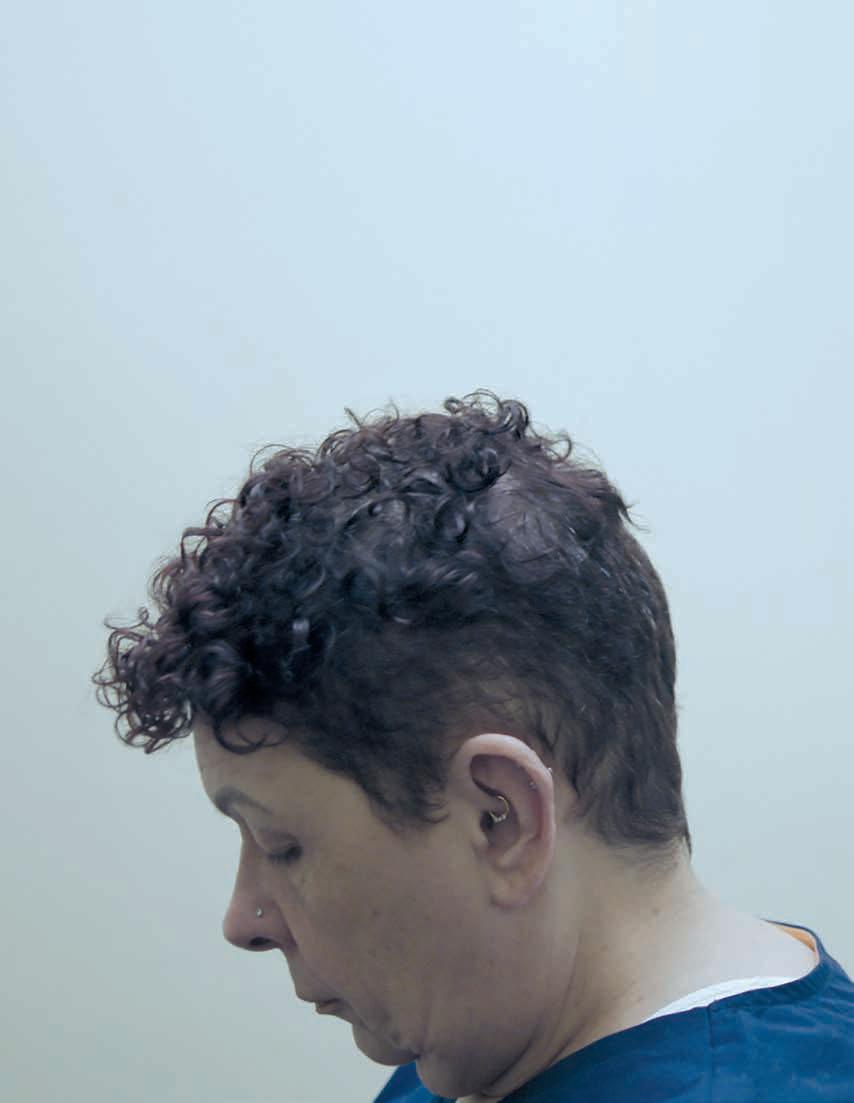
By Fanen Chiahemen
In the feature film Murmur, protagonist Donna has been sentenced to community service at a local animal shelter after getting a DUI conviction. Estranged from her daughter and living alone, Donna, who is in her sixties, brings home an elderly dog from the shelter before he can be put down. Her loneliness eased, Donna continues to adopt pets from the shelter in an effort to further fill the void in her life, and soon enough she realizes the task of caring for her menagerie of creatures is more than she can handle. Most of the characters in the feature debut from Halifax-based filmmaker Heather Young – whose short films Fish (2016) and Milk (2017) were selected for the Canada’s Top Ten Film Festival – are played by non-actors, including the lead, who is portrayed by Shan MacDonald, and the result is a unique visual style that straddles the line between narrative fiction and documentary. Murmur premiered at the Toronto International Film Festival last year, where it won the FIPRESCI Prize for the Discovery Program. Having worked with Young on her short film Green, cinematographer and associate member Jeff Wheaton was thrilled when the director asked him to shoot Murmur. “There is something very raw and deeply emotional about how Heather engages the subjects in her films. Heather is especially interested in stories about women, their place in the world, and the things that affect them,” he says. “She is the only person I know who could tell this story. She has the empathy and compassion for these complex and nuanced narratives. She knows how to build trust with her subjects, so I was very excited to work with her again.” Wheaton says one of the first things he always asks a director is what aspect ratio they want to shoot in, and when Young suggested 4:3, he was immediately supportive. They began to look at other films shot in 4:3 for inspiration, including Paul Schrader’s 2018 drama First Reformed (shot by Alexander Dynan) and Pawel Pawlikowski’s 2013 feature Ida (lensed by Ryszard Lenczewski and Łukasz Żal) and “almost everything shot by Andrea Arnold,” Wheaton says. They also looked at photographers like Jen Davis and Brian M. Cassidy and pored over Square Magazine, an online magazine about square format photography. “And that became our look book in a lot of ways,” Wheaton says. “This is what spoke to us, a lot of negative space, closeup portraits, just very realist and humanist photography, especially since it was going to be so much about one character and observing her with compassion and empathy.” The aspect ratio lent itself well to the themes of loneliness and isolation depicted in the film. “I think that’s where the 4:3 aspect ratio really shined. Confining your actor into a tighter frame really makes that negative space seem more immense. So you have these intimate portraits of Shan and can feel what she is going through; the expressions on her face are laid bare, and square format really frames someone very well,” Wheaton observes. The production secured a Canon C300 Mark II from the Atlantic Filmmakers Cooperative. “Luckily, the C300 Mark II at 2K can shoot 12-bit 4:4:4 colour space, so that was very usable for us,” Wheaton says. “I was able to go to Craig Milne at Sim Digital and ask for a set of the Zeiss standard speeds. It’s just a bit of a nicer glass to work with and not as sharp. “Because of the many restrictions with our budget, one of the rules Heather made right out of the gate was, ‘I don’t want any movie lights on set,’” the cinematographer recalls. “So that was an interesting starting point. I totally get that when you’re working with non-actors or animals on set, you want to keep everything contained and not have a forest of gear to move through.” Wheaton worked with art director Ryan Vessey to incorporate as many incandescent lights of varying wattages as possible throughout the main location, which was Donna’s house. “For the most part, we used a lot of mixed lighting with practicals. I think that’s Heather’s aesthetic – to not overdramatize the lighting, not make it feel like we’re filming a movie. To feel like you’re in someone’s home, in someone’s life. And even in places where there were a lot of fluorescent lights, we would just use those lights because there’s nothing more glaringly real than overhead lighting. There’s something about keeping it simple and keeping it close to what real life feels like – whether using the glow from a television or the harshness of the fluorescents – that lends to the documentary feel Murmur holds.
“In a lot of spaces, I would adapt to the natural or practical light I discovered,” he adds. “But we used more nets and silks or duvetyn and ND gels, constantly manipulating the light in the spaces we arrived in, trying “Heather Young is the only to disrupt or soften or slow light person I know who could down just so that the overall dynamic range was under control.” Preparation was key when it tell this story. She has the empathy and compascame to working with MacDonald, who was acting in her first film. “With non-professional acsion for these complex and nuanced narratives. tors, you’re inviting them into She knows how to build your world, and you want to make them feel comfortable so trust with her subjects, they can be vulnerable for us. so I was very excited to Heather was exceptional at preparing Shan to come to set and work with her again.” know what to expect,” Wheaton observes. “We had a fun dinner together to get to know each other before we started shooting.” Once on set, he prioritized making MacDonald feel comfortable. “I want to give a lot of space for a performer to move. We would do much longer takes with Shan than we might with professional actors,” he says. “Shan is comfortable in her own skin and comfortable with the crew. But she also revealed this bold vulnerability, which could be shocking to witness. “Trying to build a creative space, whether for a professional actor or a non-professional actor, is always something I’m aspiring to do. I want to get all our equipment out of the way so there is space for the performers to move and they have the least amount of distractions, and all the technical parts of what we do becomes invisible,” he says. Donna’s isolation is further underscored through composition and framing – secondary characters speaking to Donna are

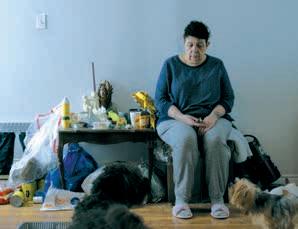

Above: DP Jeff Wheaton with director Heather Young. Left and previous page: Shan MacDonald as Donna.
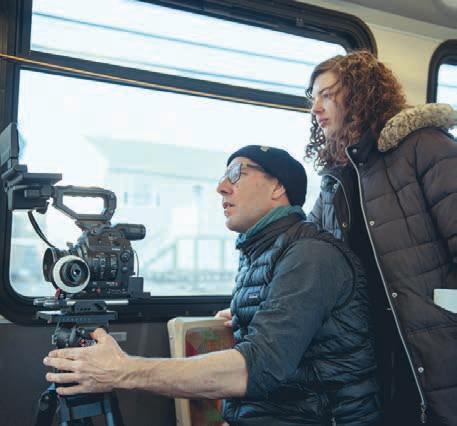
typically not shown, and there are many lingering closeup shots of her face. “Staying with Shan and how she was being affected by each event was so powerful to see,” Wheaton says. “Once I saw Heather’s edits coming together, I was so moved, I thought, ‘This is going to be Shan’s story.’ “I did break the no movie light on set rule” when shooting MacDonald’s closeups, he admits. “I built this inconspicuous little lightbox with an incandescent bulb in it with a bit of diffusion that I could bring closer just to help with the lighting, to give a bit of modelling and just compliment her features a little bit.” Another rule Young implemented was that the camera remain locked down at all times, a restriction that suited Wheaton just fine. “I loved it; I have to admit I absolutely loved the challenge,” he says. “In a lot of ways, it gives more freedom for Shan to not be distracted by anything else going on. It felt like we were doing photography, just building these little portraits of time and space. I felt freed up for the first time in a long time by not having the camera attached to me, not having to think, ‘What movements do we need to make this scene more dynamic?’ When what is happening in front of us is dynamic, we don’t need to make it more so. It gives the audience an opportunity to sit and observe this experience and let the story wash over them.” Contrary to what one might expect, working with the animals “was such a fun and interesting experience,” Wheaton says. “Heather has been involved with the community of people who bring home rescue animals and she’s volunteered at animal shelters since high school. So again, she is the only person I would trust to make a movie like this. To her, the most important creatures on that set are the animals. She’ll stop everything for them if something’s going wrong. She literally cast each creature in the film. She went out and met each of them and planned play dates to make sure all the animals that were going to be in the room together were going to get along. There was also someone who worked at one of the shelters who helped as our animal wrangler.” For Wheaton’s part, working with the animals was not so different to dealing with non-actors. “Here’s a bunch of creatures with a lot of personality, so you’re still playing by the same rules to not distract them, let them be who they are,” he says. The lead dog, Charlie, was surprisingly cooperative given his age, Wheaton says. “He was very much an old man of a dog and was fairly easy to get along with,” the cinematographer recalls. “Once he realized he was coming to hang out with us every day, he became very relaxed with his new family and played out his scenes. There was one big scene with all the dogs where I was so busy concentrating on what was going on, and Charlie came over and peed right on my foot. And his owner was like, ‘Oh, he owns you now.’”




